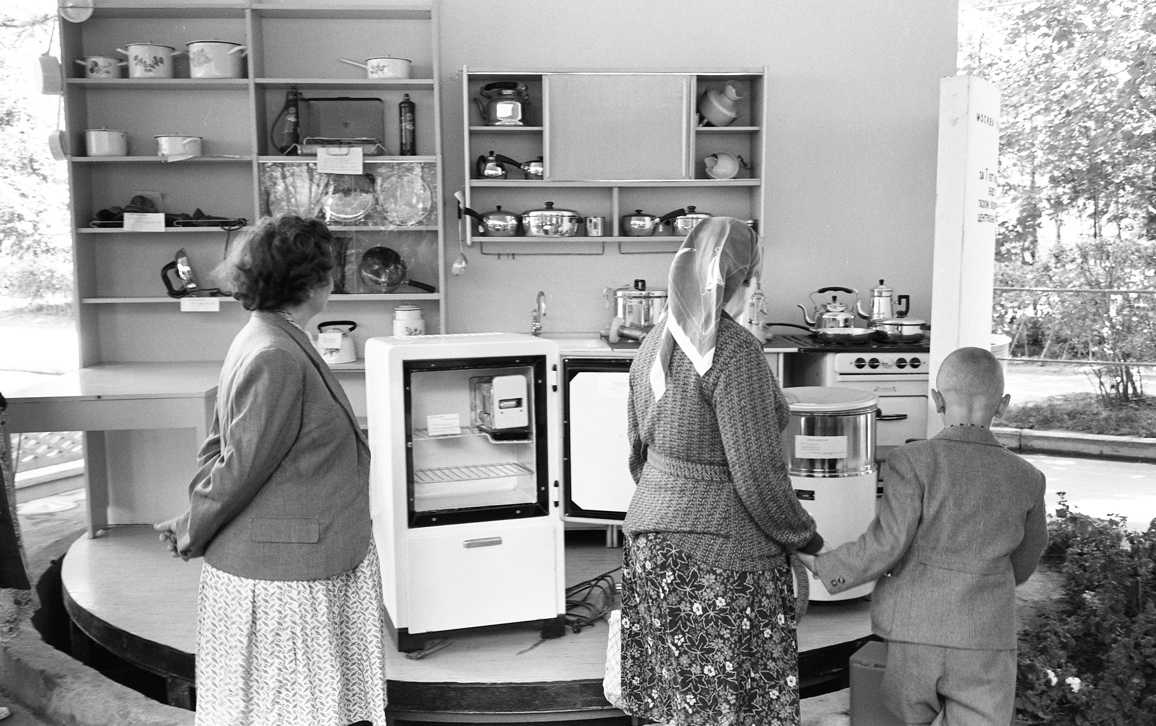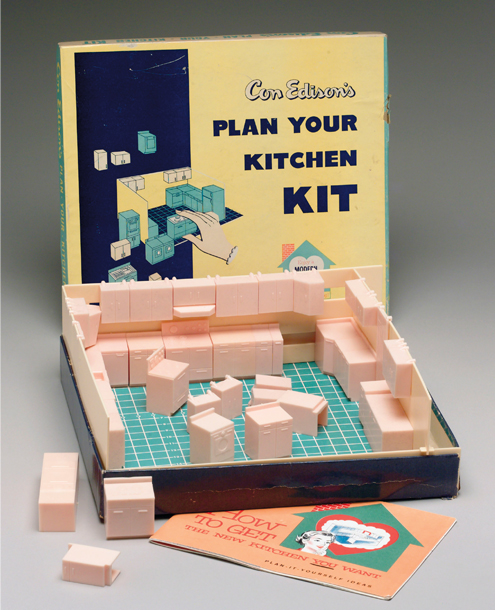Cool Customers
By Dianne Timblin
Automated refrigeration took centuries to develop—and even then, consumers weren't quite ready for it.
Automated refrigeration took centuries to develop—and even then, consumers weren't quite ready for it.

Refrigerator: The Story of Cool in the Kitchen. Helen Peavitt. 224 pp. Reaktion, 2017. $27.
Most of us rely on our refrigerators without giving them a second thought—at least until a power outage or compressor failure. But as Helen Peavitt, curator of consumer technology for London’s Science Museum, reminds us in Refrigerator, this development is rather recent, and one that was long in coming. The byways leading from the invention of the refrigerator to its commercial production, and from its introduction as a luxury good to its eventual household ubiquity, were neither smooth nor straightforward.

Image from Refrigerator, by Helen Peavitt, 2017, courtesy of Reaktion Books.
The development of mechanical refrigeration was an iterative, multicentury process, Peavitt notes, with scientists and engineers variously working to understand the nature of cold and then how to create it artificially. The earliest motorized refrigerators, dating from the 1860s, were huge, steam-powered affairs that were labor-intensive to operate. Refrigerated cargo ships required a separate crew to tend to the cooling machinery. Decades of engineering refinements effectively downsized industrial refrigeration equipment to a point where domestic applications became feasible. “Crucially,” Peavitt explains, “compressors driven by an electric motor—one of the breakthrough technologies of the 19th century—were finally made small enough to fit into a domestic-sized machine.”

Image from Refrigerator, by Helen Peavitt, 2017, courtesy of Reaktion Books.
Once it was possible for a compact, reasonably quiet mechanical cooling device to find a place in home kitchens, it still didn’t happen overnight. Although early domestic refrigerators came to market in the United States between 1910 and 1920, they weren’t big sellers. In many places, Peavitt says, the ice delivery infrastructure was so robust, and iceboxes were so comfortably familiar, that many consumers weren’t in a hurry to upgrade. But high demand for ice, along with occasional shortages, eventually persuaded buyers that mechanical refrigeration was worth the investment. In time, the ice delivery infrastructure collapsed, replaced by the refrigerated cold chain, which Peavitt defines as “a temperature-controlled supply chain . . . [that links] cold storage from a good’s place of origin to its final destination, with refrigerated stores and transport used along the journey.” That system has since become vastly complex and is largely invisible to today’s consumers.
Peavitt’s multifaceted exploration of domestic refrigeration is a worthy and entertaining read, enriched by an extensive collection of historical photographs, illustrations, and advertisements. Her discussions of the technology involved are elegant and illuminating, as are her descriptions of the myriad ways in which domestic refrigeration influenced (and still influences) culture, in the kitchen and well beyond.
Click "American Scientist" to access home page
American Scientist Comments and Discussion
To discuss our articles or comment on them, please share them and tag American Scientist on social media platforms. Here are links to our profiles on Twitter, Facebook, and LinkedIn.
If we re-share your post, we will moderate comments/discussion following our comments policy.